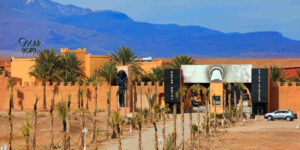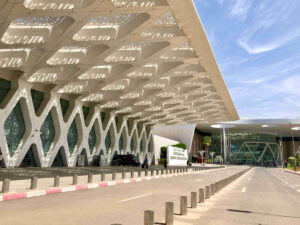Religious tours in Morocco are one of the most interesting thematic options. Also called pilgrimage trips when the participants wish to visit and pray in a certain sacred place of their religion, in reality this type of trips can also be extended to those people who have a special interest in everything that has to do with the spiritual, whether or not they are followers of that creed. In this post we show you some of the most symbolic destinations in this aspect, where Chic Morocco can take you in total comfort and safety.
Sacred destinations for Islam
As you can imagine, religious tours in Morocco are especially rich in proposals if the religion we focus on is Islam, as it is the official and the vast majority here. For this reason, we leave for other posts the religious trips for Jews and Christians, as they also have symbolic places in this sense.
The only problem for universal travelers is that these sacred Islamic spaces are usually reserved for Muslim believers, so if that is not your case, you will have to settle for knowing the sacred precincts from the outside, usually zaouias (kind of monasteries, religious schools and inns).
In any case, the most important ones are listed below, since a social event is usually organized around this temple or celebration, which the most respectful and discreet travelers can witness, although better in the company of someone local to serve as a liaison.
Moulay Idriss and his moussem
The town of Moulay Idriss is undoubtedly one of the most significant religious sites in Morocco. It is located about 30 km from Meknes and takes its name from the mausoleum of Moulay Idriss I el-Akbar, founder of the Idrisid dynasty in the eighth century and great-grandson of Ali, son-in-law of Muhammad. This mausoleum has been here since his remains were brought here in the time of the Alaouite Sultan Moulay Ismail (XVII-XVIII centuries). The architecture of this small village has the classic colors of the area, with whitewashed walls and green tiles. Its splendor arrives at the end of August, when the pilgrimage of the faithful to the aforementioned mausoleum is celebrated.
Zaouia of Moulay Idriss II, in Fez
Related to the previous place but not to be confused with it, it is also necessary to mention the Zaouia of Moulay Idriss II, that is to say, the posthumous son of Moulay Idriss II. It is the sanctuary where the tomb of this political and religious figure of the highest relevance is preserved: he consolidated the Idrisid dynasty in the 9th century and moved the capital of his kingdom from Volubilis to Fez. For this reason, among others, he is so venerated in this city. In this case, the moussem in his honor is celebrated in September, and includes folkloric parades with traditional instruments and typical dress, as well as exhibition and delivery of rich gifts.
Moulay Abdellah Amghar, in El Jadida
Another place worth noting for those interested in religious travel in Morocco is about 10 km south of El Jadida, on the Atlantic coast. It is a sacred place related to Moulay Abdellah Amghar, an ascetic from Medina who in the eleventh century ended here a very long route towards the sunset. He stopped at a fountain, known as Tit Ain El Fit and soon after, his son created a fortified zaouia, with a mosque. Although it is not a particularly picturesque place, it can be worth a trip in August, when its moussem, which lasts several days, is celebrated. In addition to the flea market, music and cultural activities, the highlight of this moussem are the equestrian shows or Tbourida that take place here: a synchronization demonstration with gun salutes, declared a World Heritage Site.
In addition to these three religious destinations and their moussems, many others can be mentioned, such as those of Mulay Bus’aib in Azemmur or in small towns like Moulay Brahim, south of Marrakech.



